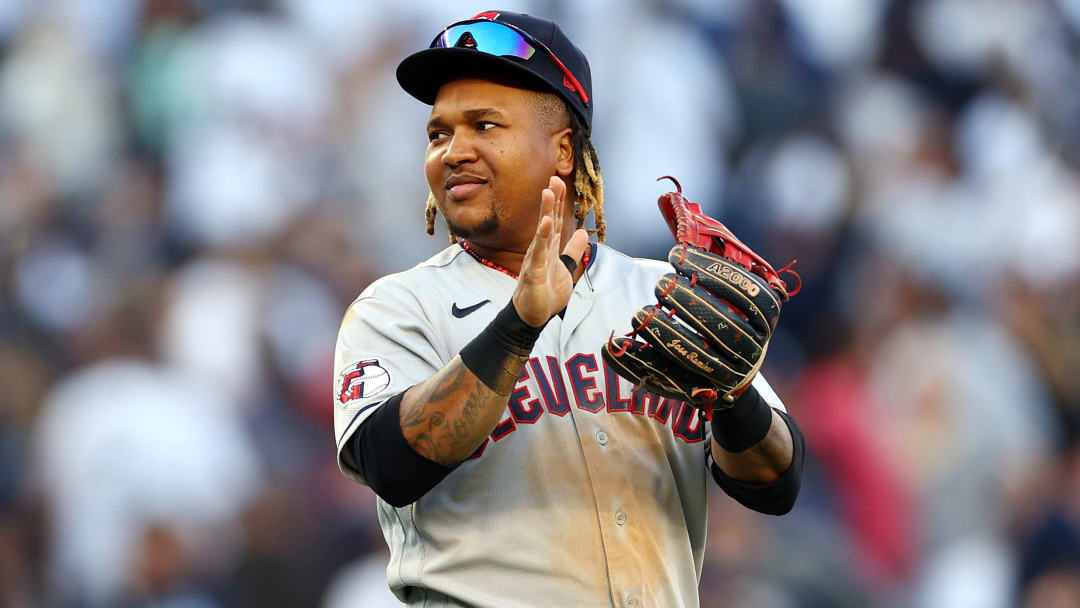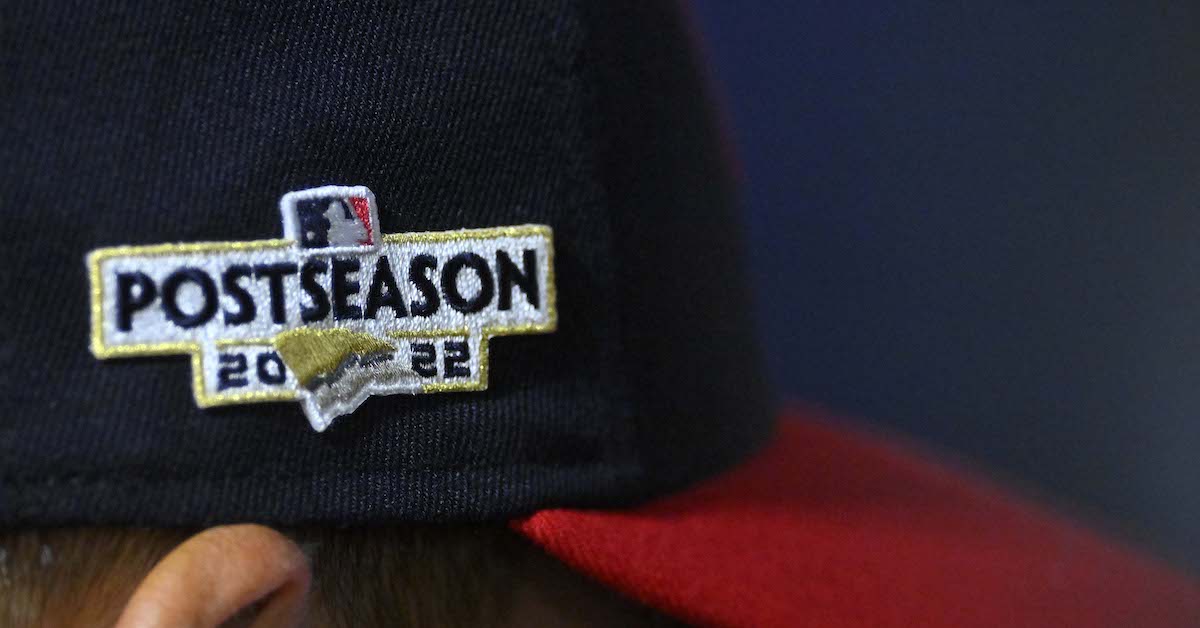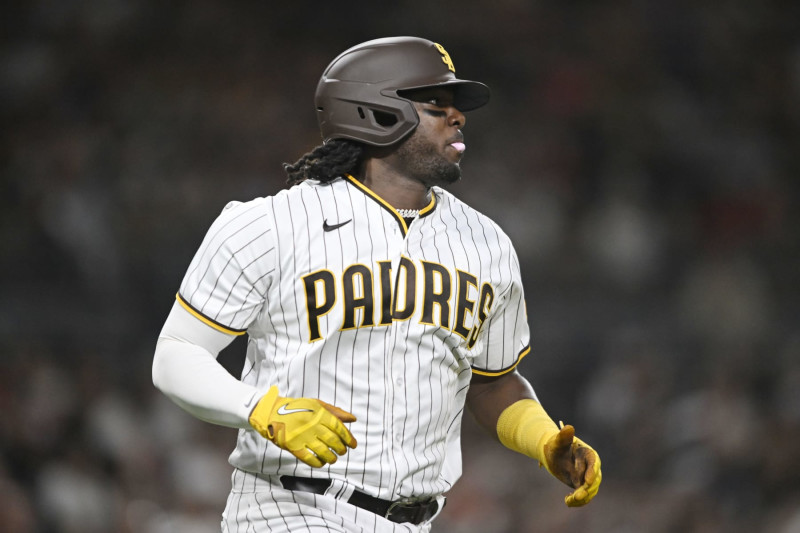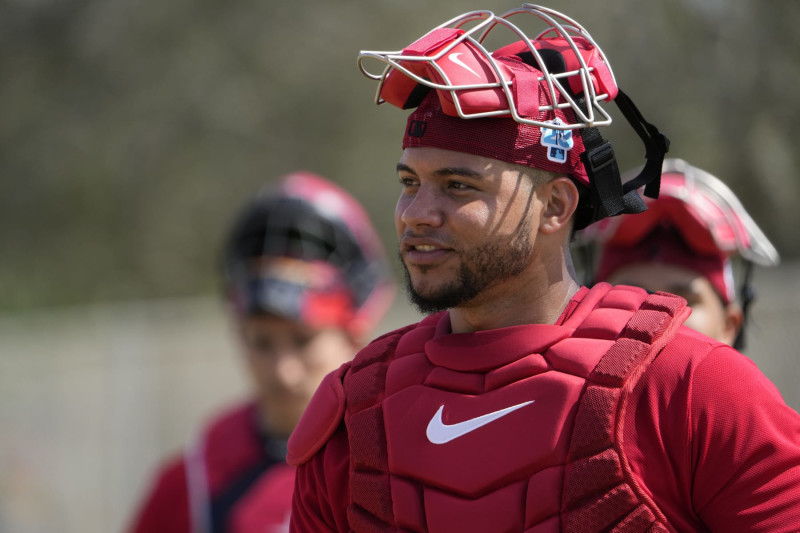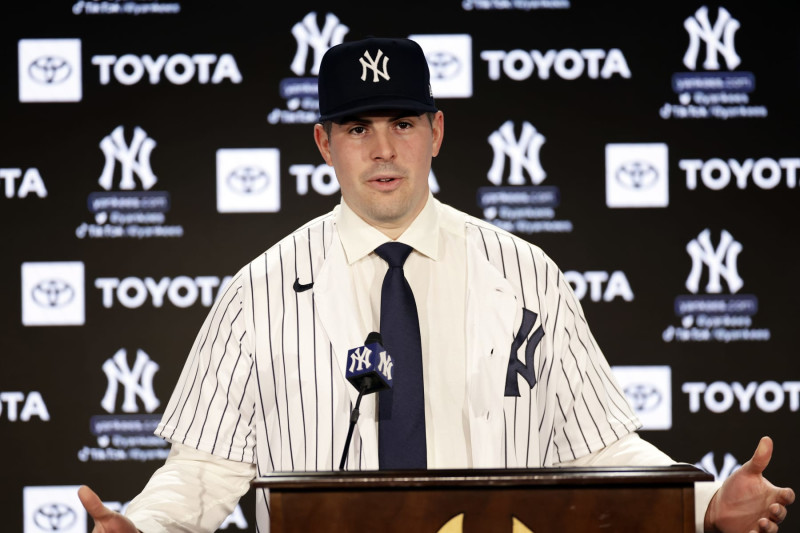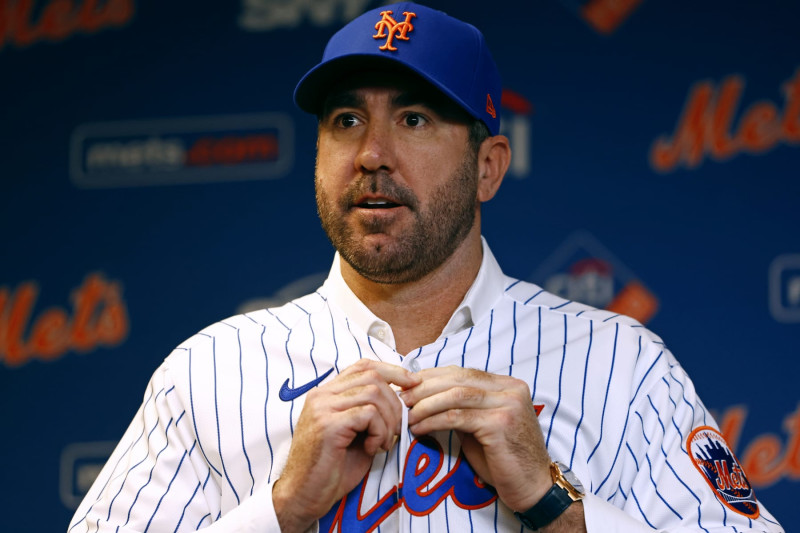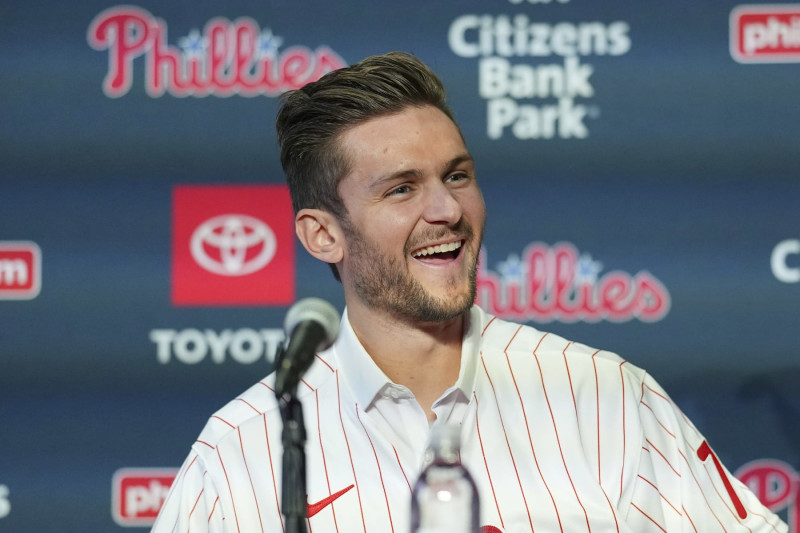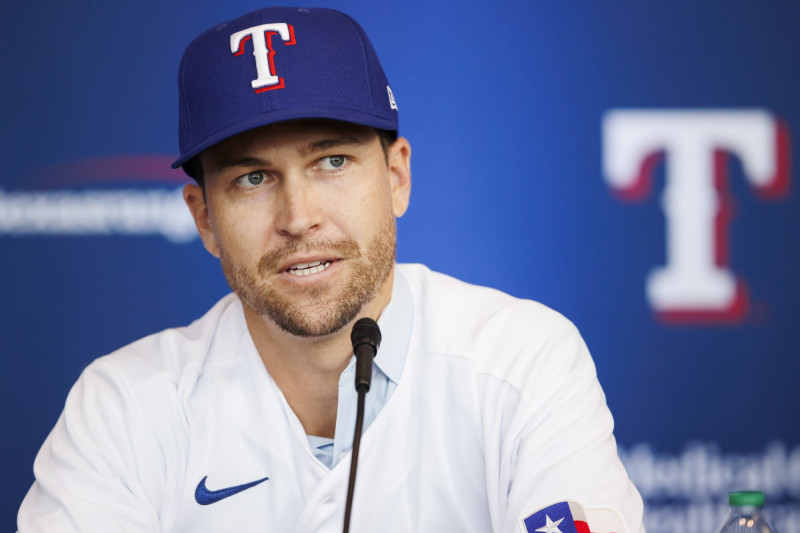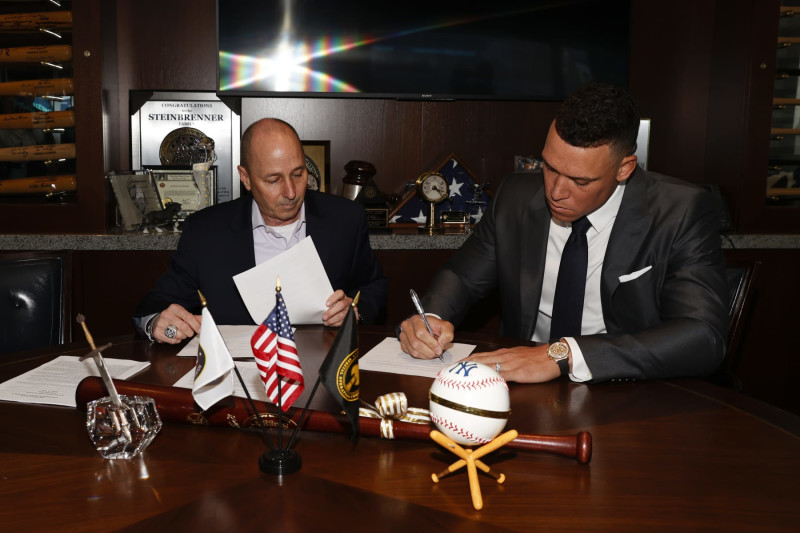FILED UNDER:
MORNING NEWS AND NOTES
Be glad the Guardians avoid arbitration with their star pitchers
Morning news and notes for Friday, Feb. 17, 2023
By Matt Lyons@mattrly
Feb 17, 2023, 9:17am EST
The fallout between the Brewers and Corbin Burnes is the worst nightmare of any team going into the arbitration process with their star player — a nightmare the Guardians are thankfully very good at avoiding.
Burnes, speaking with the media shortly after he lost his arbitration case against the Brewers, said the relationship between him and his team is “definitely hurt” from the whole process.
There’s no denying that the relationship is definitely hurt from what transpired over the last couple weeks. There’s really no way getting around that. Obviously, we’re professionals, and we’re going to go out there and do our job, keep doing what I can every fifth day that I go out there. But with some of the things that are said, for instance, basically putting me in the forefront of why we didn’t make it to the postseason last year, that’s something that probably doesn’t need be said. We can go about a hearing without having to do that.
That’s ... yikes.
Now, granted, if the Brewers waive the largest bundle of money in front of Burnes he’ll probably return in free agency when the time comes, but this certainly isn’t what you want to hear your former Cy Young pitcher saying at the start of spring training. Especially when the whole thing transpired over such a small gap between what he wanted ($10.75 million) and what the Brewers wanted to pay him ($10.01 million).
Was the public tongue-lashing from a star pitcher worth that $740,000 to an owner, Mark Attanasio, worth north of $700 million? Well — he’s comically rich, so probably.
Thankfully, this whole situation is what the Guardians have historically avoided. Most recently, they avoided arbitration with all seven of their eligible players for the 2023 season, including their own former Cy Young-winning pitcher, Shane Bieber. Things could have easily gone the same way with Bieber as they did for the Brewers with Burnes. Bieber and the Guards eventually agreed on a $10.01 million salary for 2023 — the same thing that the Brewers were trying to pay Burnes — and now the only spring training video we get of him is throwing off a mound.
Bieber may have ended up being a bit of a lucky underpay for the Guardians, as MLB Trade Rumors estimated him to make $10.7 million in arbitration. But MLBTR also estimated Burnes at $11.4 million, so his floor was quite a bit higher than Bieber’s. Cleveland also came in over a couple MLBTR projections, including Zach Plesac ($2.95 million paid/$2.9 million projected), Aaron Civale ($2.2 million/$2.6 million), and James Karinchak ($1.5 million/$1.4 million).
We don’t know what Bieber was asking for, but if they ended up going to court, the Guardians could have waltzed into the courtroom and spouted velocity dips and health history as a reason to not pay him his worth for the 2023 season (I like to imagine they would have also brought out an oversized chart showing his Baseball Savant orbs getting bluer over the years). It could have been Bieber coming out upset that his team decided to go to court instead of just paying whatever it was he was asking for despite all his years in the organization and his 2020 Cy Young win.
Cleveland Guardians news
Palacios brothers fulfill lifelong dream to team up for the Netherlands | MLB
Richie Palacios and his brother, Josh, will be playing for the Netherlands in the WBC when the exhibition tournament starts next month. Sure, it’s no “both my kids are playing against each other in the Super Bowl” like the Kelce brothers in the NFL, but it’s yet another reason why the World Baseball Classic is so great.
MLB: Bally network troubles could lead to end of blackouts | 92.3 The Fan
It’s been discussed before, but one potential benefit of the Bally Sports network going under — and MLB subsequently taking over — could mean the end of regional blackouts for those markets. Not surprisingly, it doesn’t sound like MLB is too fond of the blackouts, at least from a fan perspective.
“I don’t relish any of this,” Manfred said at a spring training media day. “I think it’s necessary to have a centrally based solution to what’s a really serious problem and move us forward to our next stage of delivering games to fans, delivering them where they want to watch them, and without the kind of blackouts that we’ve had in the old model.”
Zach Plesac, Aaron Civale enter Guardians camp under pressure to bounce back from injury-plagued year | Cleveland
The back of the Guardians rotation is filled with question marks, mostly related to health. This could be the last season for Aaron Civale and Zach Plesac to prove they can be healthy (and effective) for a full season before the three-head prospect monster of Gavin Williams, Daniel Espnio, and Tanner Bibee starts making noise at the major-league level.
Around the league
Hall of Fame broadcasters Tim McCarver died at age 81 yesterday.
Harold Ramirez and Luis Rengifo won their arbitration cases.
Mookie Betts is beefed up.
“As of now,” Shohei Ohtani is an Angel.
Takeaways from FanGraphs’ recently released playoff odds.
The Phillies extended reliever Seranthony Dominguez.
Kevin Gausman, good?
The 2025 free-agent class could be wild.
<
<
Six Takeaways From Our Playoff Odds
by Ben Clemens
February 16, 2023
Earlier this week, as is tradition, FanGraphs founder David Appelman went into his garage, turned off all the lights except for some candles, and performed a dark and arcane ritual. The words were carefully chosen and spoken precisely, with any variation promising disaster. Then he went back inside, pushed a few buttons on his computer, and now we have playoff odds for 2023!
Okay, fine, that isn’t exactly how it goes down, but it’s close. Our playoff odds bring together pieces of a lot of features you’ve already seen on the website. We start with a blended projection that incorporates ZiPS and Steamer’s rate statistic projections. We add in playing time projections from RosterResource, which incorporate health, skill, and team situation to create a unified guess for how each team will distribute their plate appearances and innings pitched.
With playing time and production in hand, we use BaseRuns to estimate how many runs each team will score and allow per game. That gives us a schedule-neutral win percentage for each team, because you can turn runs scored and runs allowed into a projection via the Pythagorean approximation. From there, we simulate the entire season 20,000 times, with an odds ratio and a random number generator determining the outcome of each game on the schedule, and voila! Our playoff odds.
Why am I telling you all of this? First, so you can look at them. They’re accessible from the main page, but you can also click here to dive in. Second, because I’m going to walk through some projections I found interesting, as well as a few places where the gap between common perception and our odds merit an explanation. I’ve come up with one takeaway per division, in order of how interested I am in my own takeaways. Let’s get started!
Oh My Goodness, the Dodgers
This is a code red. The Dodgers are projected for fewer than 90 wins. This is not a drill. Please proceed directly to the panic room. FanGraphs began calculating playoff odds and projected win totals in 2014. We’ve projected the Dodgers for 90-plus wins (or a pro-rated version thereof in 2020) every year. Until now, that is.
Why is that? In a word, pitching. We’re projecting the Dodgers to have average run prevention overall, which is a far cry from their recent form. In the past six years, they’ve allowed the fewest runs in baseball three times and the second-fewest three times. Our central projection has them allowing 150 more runs than they did in 2022. That’s, uh, a lot of runs.
We project them to come back to the pack for two reasons: they have worse pitchers and worse defenders. Cody Bellinger plays a mean center field, Trea Turner is a better shortstop than Gavin Lux, and the rotation has less margin for error (and an older Clayton Kershaw) than ever.
Subjectively, I think that projections are probably slightly too pessimistic about the Dodgers’ ability to keep runs off the board. They’ve run a preposterously low BABIP for years on end, likely thanks to an unparalleled ability to position their defense, and I think that will help them even with the new restrictions on the shift. They also have a good track record of working with pitchers, particularly relievers, to emphasize their strengths. Projections have a tough time nailing down some of the little things the organization does well.
Still, even if we’re a handful of wins low, the general point makes sense to me. These aren’t the 2020 Dodgers, who took one of the best teams in baseball and added Mookie Betts for fun. They aren’t the 2021-22 Dodgers, who poached Trea Turner and Max Scherzer to add to their embarrassment of riches. They’re starting Trayce Thompson and counting on a bounce back from Noah Syndergaard instead. They look like a very good team, but not quite the unstoppable force on offense and immovable object on defense that they’ve been for most of the last decade.
AL Central Grindfest Redux
The Guardians rode a hot finish to a comfortable division title in 2022, but the Twins and White Sox were neck-and-neck with them until each swooned in September while Cleveland prospered. This year, we think the division is in for more of the same.
The AL East has a reputation for being the toughest division in baseball, while the AL Central has a reputation for being the weakest. Our odds agree with those two takes – but also think that those two divisions have the narrowest gap between the worst and best teams. A scarce 13 projected wins separate the Tigers and Guardians in our projections. The NL East and NL West both boast first-last gaps more than twice that large.
Similarly, only four wins separate the Guardians and White Sox, who we give the third-best chance of winning the Central. Only the aforementioned AL East has a slimmer first-third gap. Add in the Royals and Tigers, who aren’t seriously contending but are more evenly matched with the best teams in the division than, say, the A’s and the cream of the AL West, and you end up with a muddled division race with plenty of capable teams but no juggernauts.
With so little separating the teams in our eyes, the division might go to the team that is least affected by injury, which I believe favors the Guardians. The White Sox and Twins have depth issues, though credit to the Twins for acquiring Michael A. Taylor to minimize theirs. Cleveland, meanwhile, has a 40-man roster chock full of potential contributors. This looks to be a close one yet again, with a marginal edge to the team with the deepest roster.
Pity the Phillies
The Braves have been putting together a mini-Dodgers run of their own in recent years, winning the NL East year after year while mixing homegrown stars with shrewd trade acquisitions. Our playoff odds have long liked what Atlanta is doing – we gave them the second-highest win total projection in the game last year – but this year we think they’re the best team in baseball, period.
The Mets aren’t far behind. They signed a string of high-profile free agents this winter, and they were already an excellent team – they won 101 games last year while their best pitcher missed most of the season. I’d take a full season of Justin Verlander over 11 games from Jacob deGrom, and Kodai Senga is a high-variance but high-ceiling addition that makes their rotation one of the best in baseball. They didn’t really lose anyone on the hitting side, either, so they’ll surely be a force to reckon with again.
That leaves the Phillies out in the cold. We give them the 10th-best projected win total, but only the 18th-best chance of winning their division. They made the World Series and then added Trea Turner, but it looks like their path to the playoffs this year will be as hard as ever. A playoff bye isn’t likely at their projected win range, but they have much less margin for error than they would have if the best teams in their division weren’t so danged good. Oh yeah, the Eagles lost the Super Bowl last weekend, too. Pour out some liquid cheese for the rough week our friends in Philly are having.
What’s Up With the Orioles?
The biggest disagreement between our playoff odds and the ZiPS odds is what to make of the Orioles. ZiPS has them as a roughly .500 team, while we think they’re in the 75-win range. That’s enough to take their playoff odds from questionable to doubtful, in NFL injury parlance, or from 28.7% to 9.9% if you want the math of it.
That has knock on effects for the rest of the AL East. The better the O’s are, the tougher everyone else’s road gets. The Rays look like a Wild Card contender with upside for more, just like they are seemingly every year. That’s much easier to do if the Red Sox and Orioles are bad, though. It’s not just that Tampa Bay has to play them 13 times apiece; they also need to finish ahead of at least one AL East team in the standings, and likely at least two, to secure a Wild Card spot.
To my mind, Baltimore’s error bands are the widest in baseball this year. They have a team made up of young up-and-comers, which means both a wider range of potential outcomes and less certain playing time. If they’re in the race in July, they might add at the trade deadline, or their prospects might develop at a completely different rate than we expect. That goes both ways, though; they’re still in talent accumulation mode, and didn’t hesitate to subtract at the 2022 deadline in pursuit of long-term success. Maybe we’re low on their chances (for what it’s worth, Baseball Prospectus agrees with us), but I think they have the least certain outlook in baseball.
If you’d like to look at a distribution of outcomes, you can do so using our Distribution mode, which shows the distribution of wins across all of our simulations. These simulations all start with the same talent level, so they won’t capture the exact type of volatility I’m talking about, but they will show you how much a team’s fortunes varied from simulated season to simulated season, even with the same players contesting each game.
Fair and Balanced Scheduling
Every year, preseason articles make too much of strength of schedule. It’s only natural – authors are grasping for stories without much new to talk about – but it simply doesn’t impact the outcomes of games very much. A 30-point difference in opponent strength of schedule is worth something like five expected wins, but that’s a huge schedule differential. That’s like the Orioles compared to the Guardians last year, before the advent of the more-balanced schedule.
Projected strength of schedule is always narrower than observed (projections have narrower bands than observed standings, since they’re mean outcomes), and the new schedule is pushing that gap even tighter. The Cardinals have the easiest projected schedule in baseball this year, and their opponents check in at a .491 winning percentage, quite close to .500. The toughest schedule belongs to the Orioles, who sport the lowest projected win total in the toughest division in baseball, resulting in a .509 projected strength of schedule.
In other words, don’t give the schedule too much credit when you’re looking at playoff odds. The Cardinals aren’t projected for 88 wins solely because their division doesn’t have any competition. Give them the toughest schedule in the game instead of the easiest one, and we’d still project them for 85.5 wins. The same goes for the Brewers; they’re getting a small tailwind thanks to their division, but the gap just isn’t worth that much. If the Brewers, Phillies, and Giants compete for the last playoff spot, our odds will tell you that the difference in their schedules is worth less than a win’s worth of tailwind for Milwaukee. Team matters more than schedule, in other words, even in the two weakest divisions.
The Angels Aim for the Middle
Every year, I make note of the fact that the way we construct our odds favors teams with strong starting lineups, regardless of the depth behind those lineups. We use a single initial projected team winning percentage to run every simulation, and that projected winning percentage mostly assumes full health. Sometimes that means that a team you’d expect to struggle if any stars miss time (yes, I mean the Angels) fares better on our odds than you’d expect them to in real life.
Not so in Anaheim (they might be the Los Angeles Angels, but they still play in Mickey Mouse’s shadow) this year. The ZiPS odds, which account for injuries by simulating unique seasons with varying playing time for each player, like the Angels more than our odds this year. The team has finally done enough adding around the edges, as Mike Petriello recently noted, that it’s no longer just Trout, Ohtani, and a pile of below replacement-level teammates.
Their reward? An AL West field that’s difficult and only getting more so. The Astros just won the World Series. The Mariners are ascendant, having broken their playoff drought behind Julio Rodríguez’s triumphant debut. The Rangers might have the best starting rotation in baseball. The A’s… okay, the A’s are bad, but the other three teams in the division are good. The middle class of the AL is better than ever. Last year, we projected eight AL teams to win 80 or more games. This year, it’s 10. The path to an AL West title or a Wild Card berth is littered with solid competitors.
Heck, last year the Angels and Astros were the only AL West teams with a preseason projection of 80 or more wins, and this year we think every team other than the A’s will clear that bar. The Angels front office is doing what they weren’t able to accomplish in recent years: surrounding the best players in the game with competent major leaguers. Unfortunately, everyone else is improving too, and the end result is 39% playoff odds. That doesn’t mean they’re going to miss the postseason, but it does mean they have a tough road ahead.
